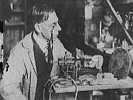
|

Computational Biology Capstone: Project Software |
|
 CSE Home CSE Home |
 About Us About Us |
 Search Search |
 Contact Info Contact Info |
|
Note on Instructional Project machines as serversThe machines at your disposal for capstone computing are the Instructional Project machines kiska and umnak. These are distinct from the Instructional Lab Linux machines, which should not be treated like servers. If you need to work from a Windows machine or from home, log in to one of the Instructional Project (as opposed to Instructional Lab Linux) machines listed above to do your work.
MicroFootPrinterWhere to find MicroFootPrinterMicroFootPrinter has been kindly installed by its author, Shane Neph, on the Instructional Lab Linux systems and the Instructional Project machines (kiska and umnak). The path for its latest version is/projects/cse/courses/cse481f/bin/default/microfootprinter
Where to find MicroFootPrinter documentationThere is a short paper on the web version of MicroFootPrinter:Shane Neph and Martin Tompa, MicroFootPrinter: a Tool for Phylogenetic Footprinting in Prokaryotic Genomes. Nucleic Acids Research, vol. 34, July 2006, W366-W368. There are slides for a lecture on MicroFootPrinter. Documentation on the command-line version of MicroFootPrinter is available at /projects/cse/courses/cse481f/bin/v1.14/bin/MFP-README
MicroFootPrinter parametersYou will always need to use the parameter-host cubist.cs.washington.eduIt is likely you will want to use the following parameters: -grouped [filename] -skipduplicatechecks 1 -basichtml 0 A script for extracting MicroFootPrinter's motifsIn the directory /projects/cse/courses/cse481f/bin there is a small script called parse-motifs.csh . It takes one input (MicroFootPrinter's HTML motif file) and extracts the text corresponding to the motifs in that file. For instance:parse-motifs.csh up.out.motifs.html > parsed.results A program for detecting near-duplicate sequencesSee the files in the following directory:/projects/cse/courses/cse481f/07sp/filterAn example of this program's results. Issues that are not yet handled by this program:
|
|
Computer Science & Engineering University of Washington Box 352350 Seattle, WA 98195-2350 (206) 543-1695 voice, (206) 543-2969 FAX [comments to tompa] | |